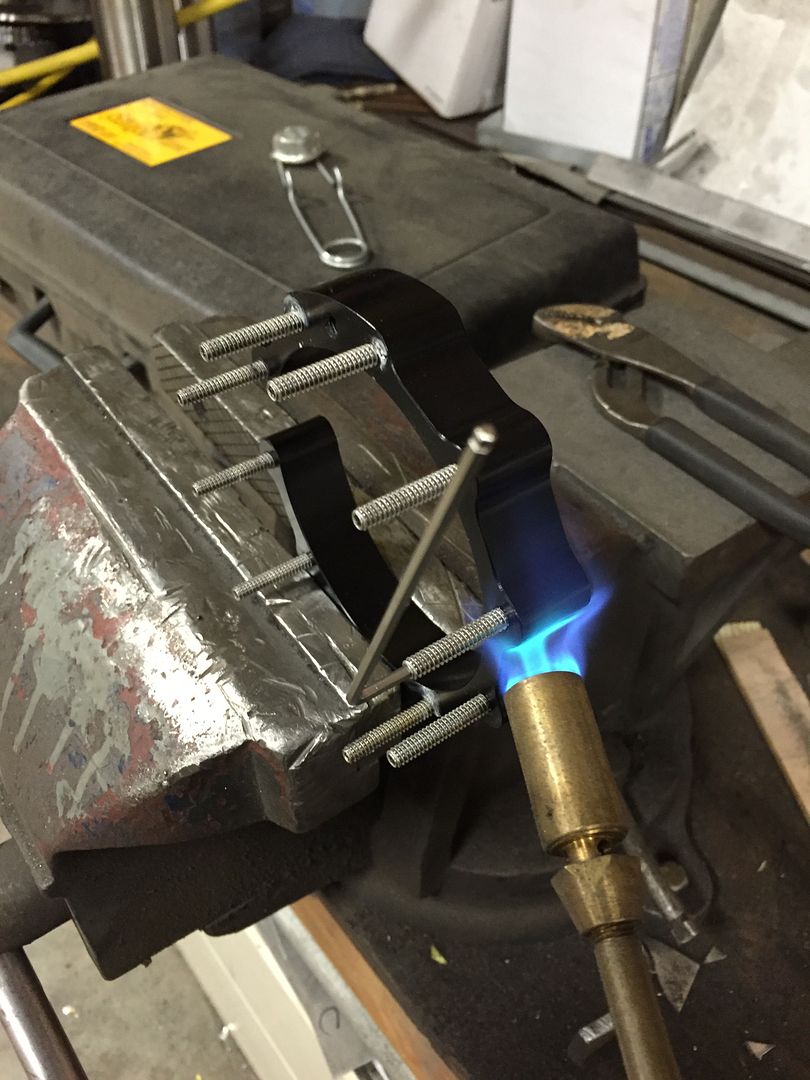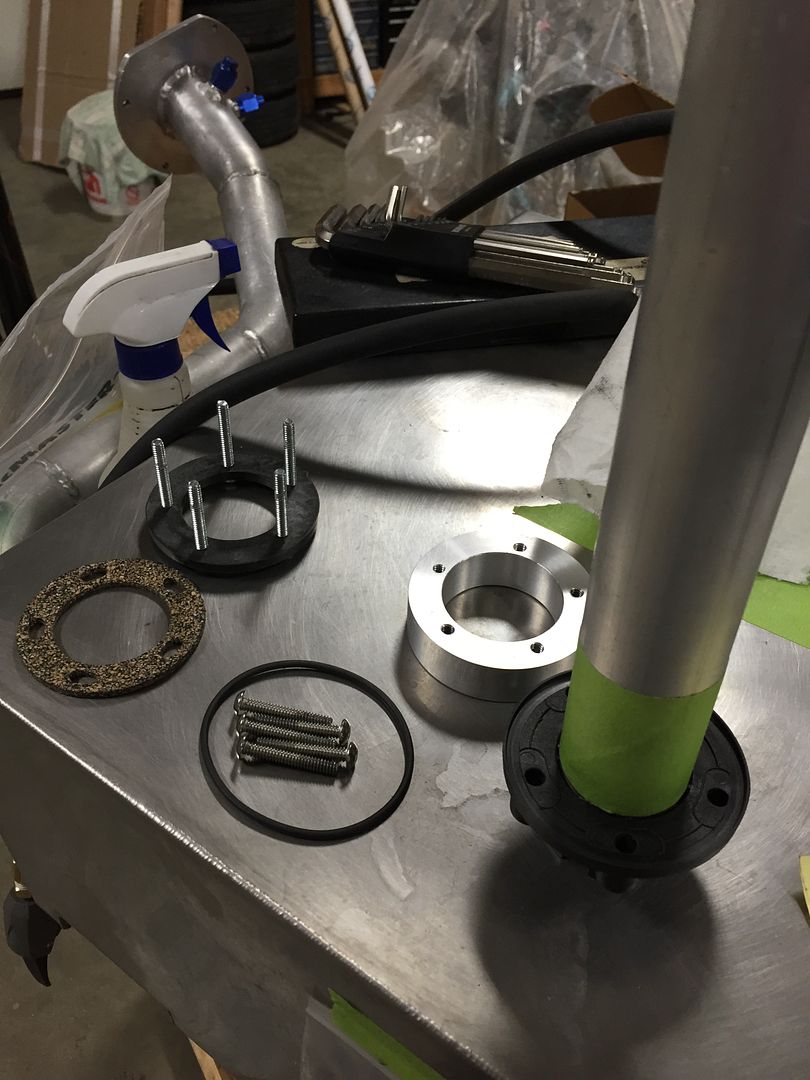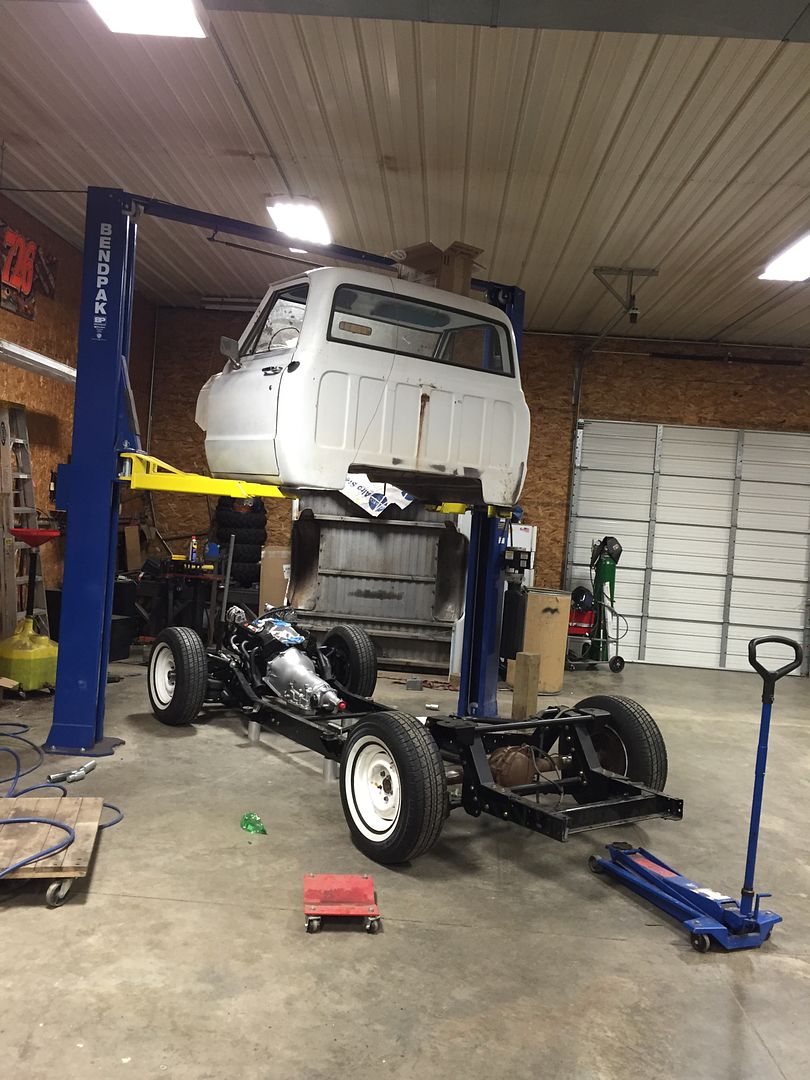When I left off working on the fuel cell, I finished assembling the fuel pump and couldn't get it to pass a pressure test. I didn't take detailed pictures, but it failed a 1psi pressure test. The leak points were all around the threaded studs on both the fuel pump and the level sensor, so I decided to switch to bolts.
This is the original design - studs coming through the fuel cell with nylon washers and nylock #10-24 nuts.
I decided to do a little better. I removed all of the studs in the Aeromotive fuel cell lock ring. These were installed with plenty of Loctite, so I had to torch them out.
In addition to swapping the stud/nut combo for bolts, I decided to replace the gasket with a Viton o-ring. It's hard to beat the reliability of a metal-to-metal bolted joint with a static sealing o-ring. The gasket groove in the bottom of the Aeromotive fuel pump bulkhead was .100" deep. I wanted to use a -157 o-ring which is .103±.003" diameter, so I had to cut down the land. My target was .080", which would provide .020-.026" of crush on the o-ring.
I made this sketchy fixture to hold the part in my lathe. I welded the tabs onto a piece of 5" diameter pipe, drilled and tapped a few holes, then faced it flat.
Bulkhead bolted in place. It's hard to see because the lighting isn't very good, but the original groove is visible here.
Masked up.
Fast forward a few steps - I cut the groove down to .080" deep and installed the brown Viton -157 o-ring.
I also replaced the plastic ring, #10-24 studs, and cork gasket on my level sensor with another Viton o-ring seal. I machined an aluminum mounting ring for inside the tank.
The bottom of the level sensor had a small lip, but it wasn't very flat and definitely not a suitable surface for a reliable o-ring seal. So I mounted it in my lathe, set up an upside-down face grooving tool, and spun everything in reverse to get a nice groove under the flange.
Under the heads of the bolts, I'm using sealing washers. These are just plated steel with Buna-N seals, but everything should still be compatible with gasoline. Viton is a little better, but these aren't too easy to find in stainless/Viton.
Sealed!! Gas tank = done.
Woody has been making progress on his '72 as well. He lifted the cab off and blocked the chassis up to ride height to set the carrier bearing position and measure for the custom two-piece driveshaft.













No comments:
Post a Comment